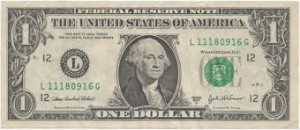 The US dollar (USD) is seeing renewed strength and this strength is giving asset classes across the globe a new direction. Equities have rallied and oil prices have fallen over the last two years on the back of the USD strength.
The US dollar (USD) is seeing renewed strength and this strength is giving asset classes across the globe a new direction. Equities have rallied and oil prices have fallen over the last two years on the back of the USD strength.
Indian equities and bonds are benefiting from the dollar strength. The Indian rupee (INR) is being tugged between dollar strength and improving domestic macro fundamentals though risk aversion on the currency is down sharply.
The future direction of the Indian markets will be driven by dollar strength. The trend of rising equities and falling bond yields will continue. India will see Sensex and Nifty rising and ten-year bond yield falling on the back of the USD strength. The INR should see the benefit of capital flows down the line but in the immediate future the sentiments around the strong dollar will keep the currency at lower levels to the US dollar.
Why is the USD strengthening?
The USD index that tracks the USD to a basket of six major world currencies (Euro, Japanese Yen, British Pound, Swedish Krona, Canadian Dollar and Swiss Franc) has gained 10% over the last two years. The USD has gained 9% against the Euro and 21% against Yen. INR has lost 23% against the USD since April 2011.
The USD is strengthening on the back of improved performance of the US economy relative to other countries across the globe. US unemployment rate has dropped from 8.9% to 7.5% over the last couple of years while the economy has consistently added jobs month on month. The shale gas revolution in the US has lowered its oil imports that are down 22% from levels seen eight years back. Global oil prices are down over 13% since April 2011 on the back of the lower demand for imported oil in the US.
US housing market is seeing slow signs of recovery with prices stabilizing and buyers coming in to the market on the back of record low mortgage rates. The Fed’s zero interest rate policy is filtering down to mortgage rates.
Inflation in the US is below the Fed’s threshold level of 2% with core inflation for March 2013 at 1.2%. The Fed has enough leeway to maintain its bond purchase program of $85 billion a month, which is helping the economy.
The fact that the Eurozone is in recession, Japan is fighting deflation and countries such as Britain are struggling with debt and extremely low growth expectations is helping the USD strengthen. Hence on an absolute as well as relative basis the outlook for the US economy and for the dollar is highly positive.
Why are equities and bonds rallying on positive USD?
US equities indices, the Dow, S&P 500 and the Nasdaq have rallied by over 22% over the last two years. The Nikkei is the only major global index to have outperformed the US markets with a 52% rise, largely due to the falling Yen. Indian markets have hardly performed over a two-year period with the Sensex and Nifty returning just around 2%. US equities have clearly benefited from the slow but steady recover in the US economy. The strengthening USD coupled with falling oil prices is also helping the US markets.
The Sensex and Nifty have benefited from the rally in the US markets as equity market sentiment is much better than what it was one year back. The Indian indices have climbed by around 20% over the last one year with FII’s pumping in $24 billion in the equity markets. Equity sentiments have picked up as worries on CAD (Current Account) that touched record highs of 6.7% of GDP in the third quarter of 2012-13 and inflation,which was trending at double digit levels a couple of years back, are coming off.
CAD is expected at levels of 4% to 4.5% of GDP in 2013-14 while the WPI (Wholesale Price Inflation) came in at a three-and-half-year low at 4.89% for April 2013. The government is confident of meeting its fiscal deficit target of 4.8% of GDP against 5.2% and 5.9% seen in 2012-13 and 2011-12, respectively as lower oil prices coupled with hike in administered fuel prices is helping control the subsidy bill.
Indian government bond yields have dropped 100bps over the last one year with the benchmark ten year bond yield down to levels of 7.25% against levels of 8.25% seen last year. Falling inflation expectations coupled with easing monetary policy by the RBI that has cut its policy rate by 125bps over the last one year is helping government bond yields to trend down.
The INR is still languishing at lower levels against the USD at close to Rs 55 to the USD. The INR is just off 3.5% from record lows against the USD despite strong capital flows into equities and bonds with USD 30 billion of FII flows in fiscal 2012-13. Improving fiscal health and expectations of lower CAD is not feeding into INR strength. The broad USD sentiment is affecting the INR but going forward the currency will start seeing strength on the back of improved macro economic fundamentals.
The USD strength is helping Indian asset classes and as the currency continues to gain traction with the Euro and the Yen, the Sensex, Nifty, Ten Year Bond and the INR will benefit.
